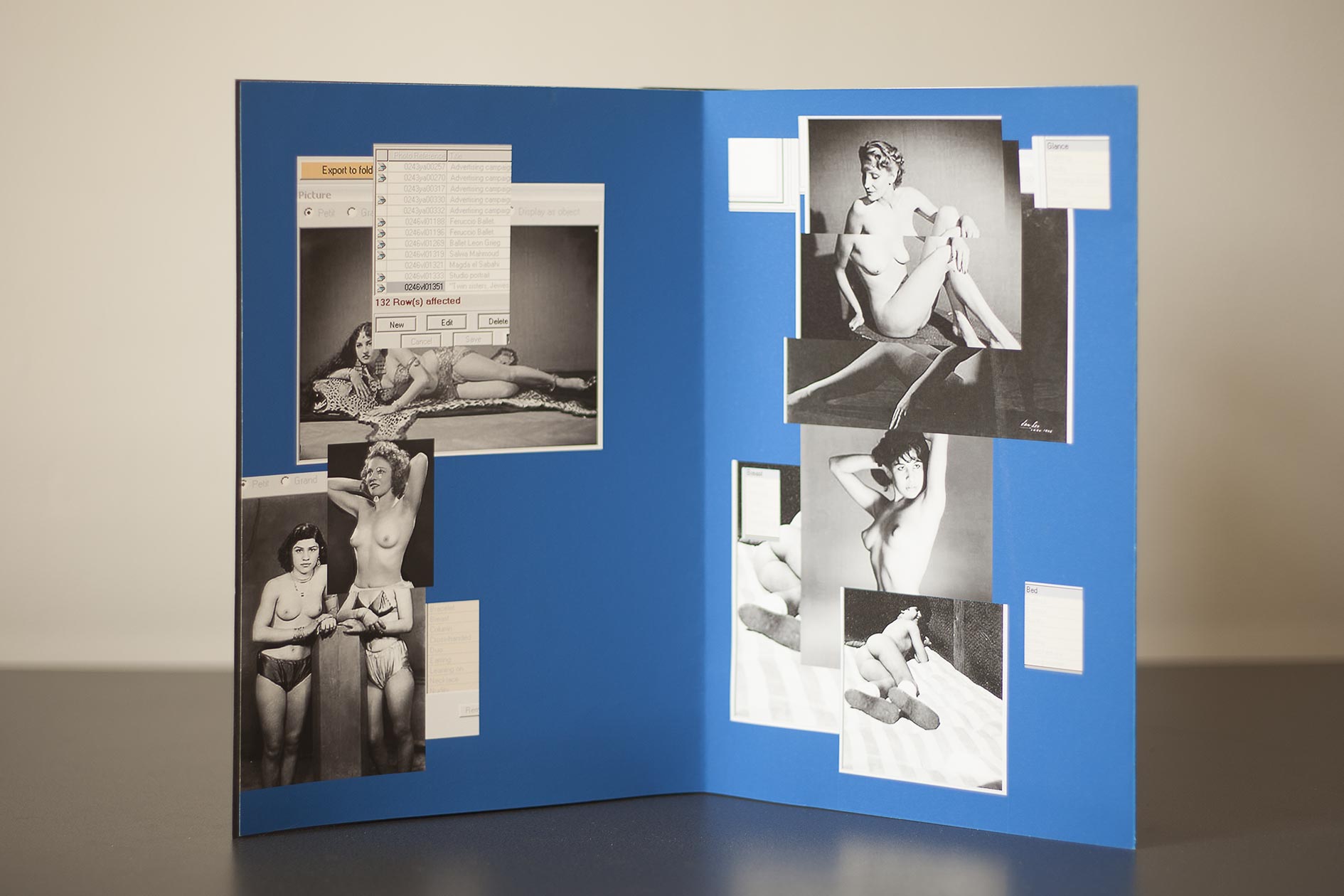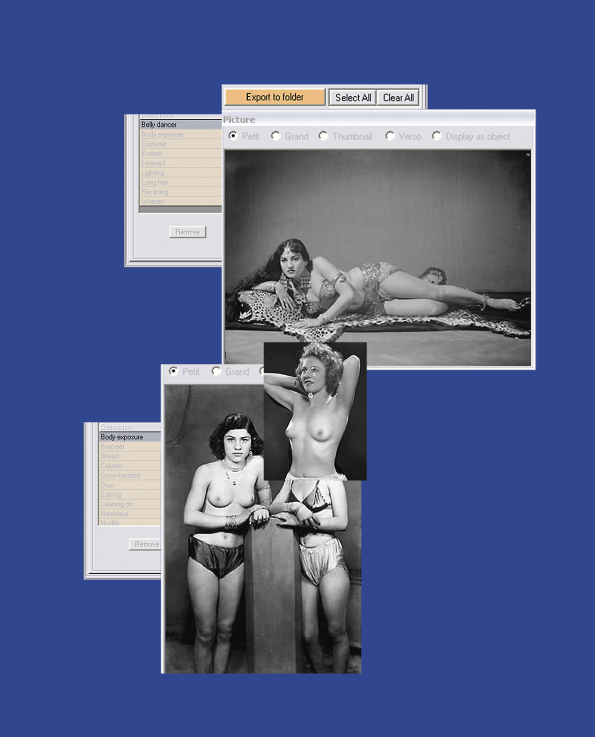SEX'N'DATABASE
Hand bound artist’s book with folded paper structure
29,5 x 126cm colour inkjet print folded onto 6 pages
accordion structure (29,5 x 21 cm closed)
Epson 189 gsm paper and black boards on accordion cover
Photographic source: Arab Image Foundation


Sex’n’Database: A Corporeal Taxonomy is a photographic object comprised of creative data visualisation and a bookwork. Both showcase a series of experiments done whilst querying/queering the photographic database via textual keyboard input.
“Sex’n’Database: A Corporeal Taxonomy” was produced in the context of the research grant project “Found Photo Foundation: Sourcing from the Arab Image Foundation.” From June 22 to July 2 2015, Found Photo Foundation was in residence at the Arab Image Foundation, Beirut. This residency was supported by the Centre for Media Research (London South Bank University). This residency was primarily focused at sharing archival methodologies used by the Found Photo Foundation in its exhibitions and publications and explore the potential of the Arab Image Foundation’s photographic collections as source for photobook publishing.
During the course of the residency, I also drew on the Arab Image Foundation’s online image database as source for an artist’s book. The work I created, “Sex’n’ Database: A Corporeal Taxonomy” is a photographic object comprised of creative data visualisation and a bookwork. Both showcase a series of experiments done whilst querying/queering the photographic database via textual keyboard input. To focus on a small sample, I utilised only search words related to sexualities and corporeality and documented linked photographic sources as they rendered live on screen. Words (taxonomy) and photographs (collection) were captured via screenshots, and collaged to showcase the operating system crashing on overload. The resulting “panels” evidence the tension between two simultaneous processes: taxonomy (cataloguing practices) and photography (photographic practices), whilst also rendering visible gaps in the building of institutional collections.
My next step was to investigate how screen-based photography transfers to the structure of the book. One single (126 cm) inkjet print, with a panoramic collage of screen-captures, was folded into a six folds accordion. The case also has an accordion spine that sustains the book vertically and stores it as a six pages codex. This artist’s book sets up an interactive experience and the emergence of a quasi-narrative relationship between the screen-capture and the print translation. The accordion structure, allowing the reader to expand more than one spread at a time, creates a time space sequencing that contrasts with the flatness of the screen. Both works have become media archaeology, for the image database has since then been replaced by an open access platform with a very different interface.
>> contribution to Activating the Archive online exhibition
curated by Alejandro Acin and Isaac Blease,
explores and questions the malleable nature of visual
archives and the many ways that they can be activated
through contemporary practices @ PH museum
Sex’n’database: A Corporeal Taxonomy
photo- essay also featured on
MEMBRANA magazine
Vol. 2, no. 2
Cabinet issue: Collecting Photographic Images
Edited by Jan Babnik







